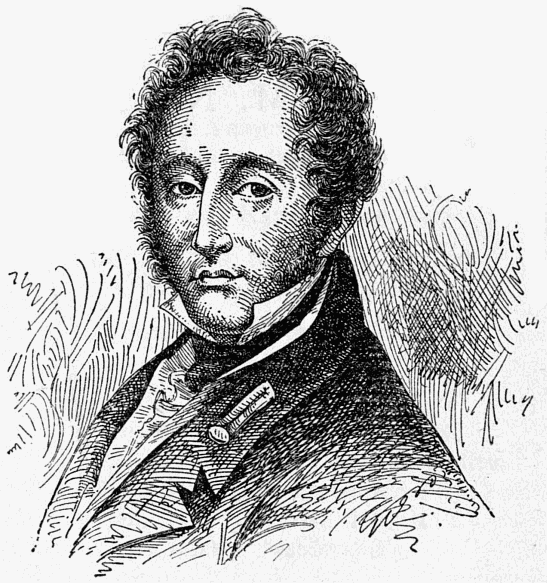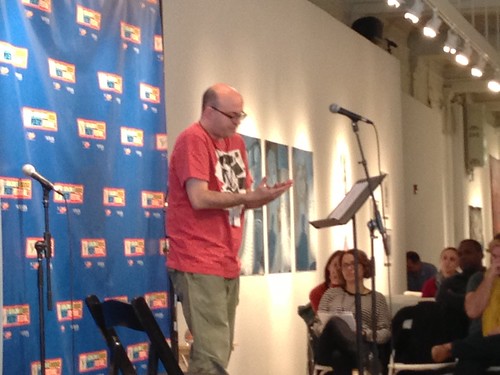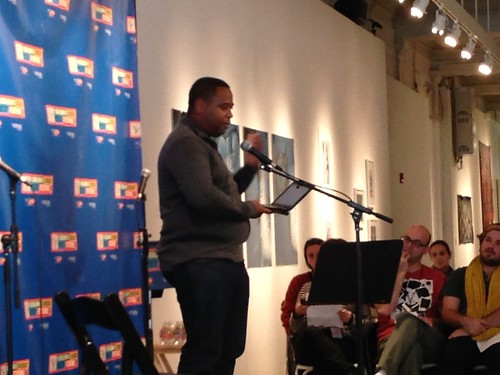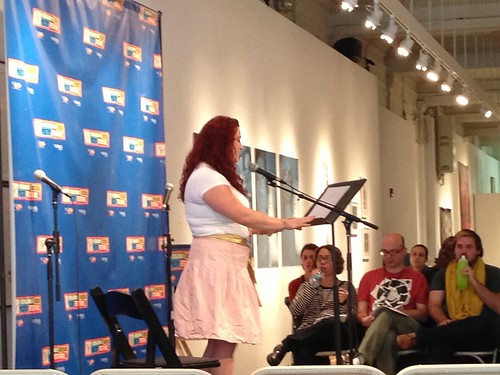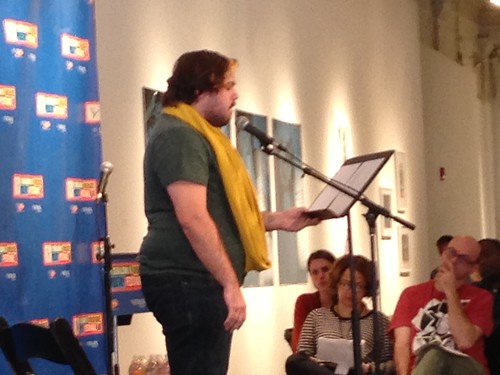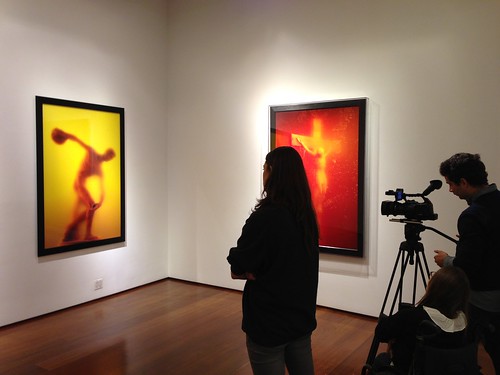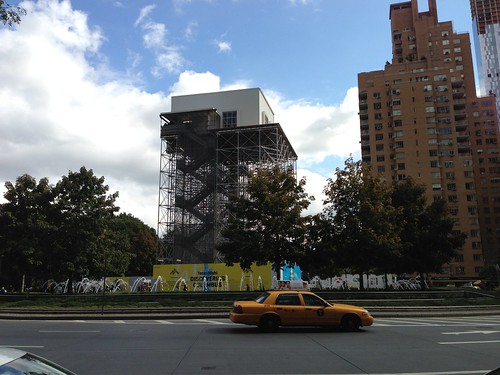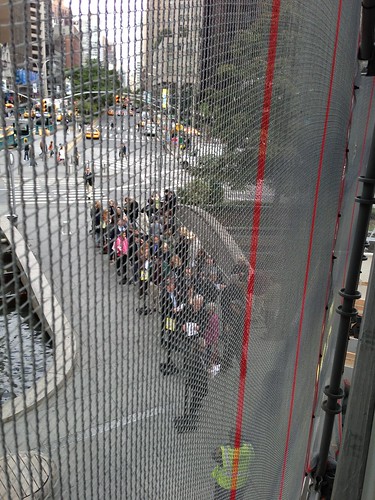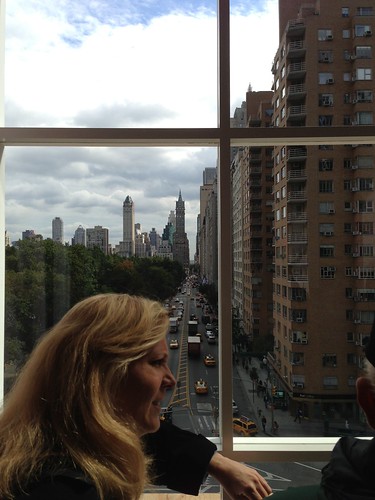 |
| Governor Mitt Romney & President Barack Obama (Salon.com) |
What was he thinking? President Barack Obama, I mean. What was he thinking last night, and what was he doing beyond showing up, in Denver, at the University of Denver, to stand just a few feet away from Republican presidential nominee and his chief opponent, former Massachusetts governor Mitt Romney, and mouth a highly abstracted, jargon-thick passionless account of his policies and tenure?
As I was watching the president's performance in the debate was I thought it was just flat, but once he began delivering his rambling, stammering closing statement, I thought it was only a breath short of disastrous. Throughout the evening, except on a few issues, the president repeatedly refused to confront Romney—whom I tagged as #Romnocchio on Twitter--on his lies and misstatements (such as the alleged "$716 billion cut" to Medicare), nor did he once broach Romney's "47% " slur, which had begun to seriously wound the Republican nominee in the public consciousness and the Swing State matchups.
Instead, President Obama appeared alternately exhausted and peeved, when he wasn't both. He kept his head down, pursed his lips, and then when he cracked them, he went on extended disquisitions that were devoid of humor, muted in their enthusiasm, and overly wonky, as if he was speaking to a group of Washington and New York insiders, instead of uncommitted voters and his base. And Republicans who might be willing not to vote for Romney if his performance were lackluster enough. Simplify, President Obama, and don't be afraid of showing a bit more emotion, or citing people, not just facts and statistics.
Moreover, even if you have to do it in the nicest way you can, call your opponent out on his lies, and point out when he's flipflopping. Again and again, President Obama did not strike when he could have, not even when Romney gave him huge openings. There was no mention of Romney's missing tax files. No mention of Romney's Bain tenure or the thousands of jobs destroyed and pensions blown up by the private equity firm? Instead, Obama kept reverting to neoliberal bromides and conservative frames, only occasionally sounding like a liberal.
Then there were the contradictions. Does the President want to return to the Clinton-era federal marginal tax rates, as he suggested, which would radically trim the deficit (as occurred under Bill Clinton, along with the creation of 23 million jobs), or does he want that "balanced," "Grand Bargain," dreadful "Simpson-Bowles" plan--whose committee, which included Republican Vice Presidential nominee Wisconsin Congressman Paul Ryan, couldn't even reach final agreement, leaving the two eponymous committee chairs to issue their own document--hat if enacted might spell the end of the Democratic Party? Does the President really see eye-to-eye with Mitt Romney on Social Security, or not? And does he or no one else in Washington grasp that Medicaid not only provides services for poor children, but millions of seniors?
It did not help that Jim Lehrer, a longtime debate moderator with a history of haplessness, appeared incapable not only of asking cogent questions or moving beyond the narrow focus of Washington elites, but of keeping either man, particularly Romney, in check. Obama appeared to be expecting Lehrer to rein Romney in, but as soon as he realized that wasn't going to happen—and it wasn't—why couldn't he switch gears and at least challenge Romney directly himself, even in a polite fashion? The doe-eyed, sputtering Lehrer was so woefully inept he ought just to have stood up, set his papers down, and left the room altogether.
Nor did it help that Romney came out ready to attack, but also made sure he kept repeating his tales and half-truths such that they appeared real, and he dropped in right-wing talismans, from defunding PBS (only a tiny sliver of the federal budget)—killing Big Bird—to citing the 10th Amendment. Again, the President appeared ill-prepared to leap on any of these statements either. He even came at Obama from the left 1-2 times, hammering the President on the "too-big-to-fail banks" in "Dodd-Frank," as if he and the GOP cared one whit about the gargantuan size or excessive power and repeated unethical, sometimes criminal behavior of these global behemoths. Romney was determined not to mention Congressman Ryan or President Obama's predecessor in the White House, George W. Bush, knowing how unpopular both of them are, but why did the President choose radio silence on both?
On top of this, although this was supposedly a debate on domestic issues, countless important ones, ranging from employment, public and private infrastructure, the housing crisis, women's rights and reproductive autonomy, LGBTQ rights, the immigration debacle, gun violence and control, poverty and homelessness, the prison-industrial complex and racial profiling, the effects of climate change and global warming, and many others, never made it past Lehrer's lips, let alone Obama's or Romney's.
Perhaps, as former Vice President and debate veteran Al Gore pointed out to the Current TV post-debate panel last night, the president might have suffering from altitude sickness, having only arrived there at 2 pm, thus giving himself no time to acclimate. (I know I felt it when I was in Colorado.) Perhaps the President was thinking about his wedding anniversary, and couldn't focus. Perhaps he was so unused to being challenged, by anybody, especially someone spewing half and non-truths, that he was taken aback. Perhaps he could not rise above his past poor debate performances. Perhaps he just needed to be startled into action. Perhaps he was trying not to commit a gaffe and to speak to the DC/NY media, not the American people, many of whom are low-info folks who might just be tuning in to the race. Perhaps—though I seriously doubt it—this was a rope-a-dope/secret ninja/120th degree chess move, as a friend suggested, and he purposely tanked to give Romney false confidence. I don't know.
But I do know he better bring for the next debate. Too much, from the future of the Affordable Care Act to the Supreme Court to the wholesale destruction of the social safety net, is riding on the president's reelection. PBS isn't the only thing in Romney's and Ryan's—and the GOP's—crosshairs. President Obama must right himself right away, and be ready, truly ready, to thrown down at the town hall debate on October 16 in Hempstead, New York.


